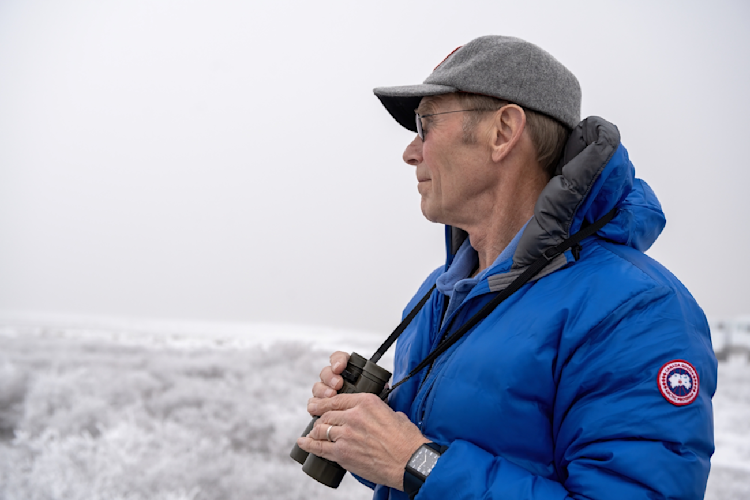
Photo: Kt Miller
Why Don't We Feed Wild Polar Bears?
MINS
17 Apr 2025
The Arctic is so vast that an effective feeding program would be expensive and extremely difficult to implement.
When humans intentionally provide a food source for wildlife, like a bird feeder, that’s called supplemental feeding. Why don’t wildlife managers provide supplemental food for polar bears?
Polar bear habitat is too large. The area covered by sea ice, where polar bears generally live, is close to twice the size of the United States. Effective supplemental feeding programs focus on a limited area and a limited timeframe, for example feeding elk on winter ranges that have been restricted by human development.
It’s extremely expensive. A decade ago, research estimated that to feed only the bears coming ashore in the Churchill Manitoba area (perhaps the most accessible of all polar bear habitats) would cost over a million dollars per month. The costs of feeding could only grow as more bears in more parts of their range become food stressed. Few jurisdictions are willing to commit to permanent feeding of polar bears at the costs of many millions per month and with no end in sight.
The timeframe is too long. The goal of supplemental feeding is to give a population a boost through a challenging period. For polar bears, their access to food is becoming more challenging every decade as the sea ice they use as a hunting platform declines. Wildlife managers would need to commit to a supplemental feeding program for many years, or even permanently in some regions.
In most jurisdictions, feeding polar bears is illegal. There are currently no supplemental feeding efforts for polar bears in any of the five nations where they live.
Animals can become dependent on artificial food sources. Where polar bears have access to human food sources, we’ve seen other risks. In northern communities across the Arctic, polar bears sometimes get access to the local trash dump. Some bears stay and look for low quality food there, even when the ice has formed and they could hunt seals instead. Eating human trash increases their exposure to plastics, toxic chemicals and disease agents.
And there are other risks. Access to artificial food sources can increase risk of disease transfer both between individuals and between species sharing the resource, lead to food conditioning and ultimately habituation to being near people, and create artificial gatherings of bears that can increase the likelihood for negative human polar bear interactions.
If supplemental feeding won’t work, what can we do?
Because of sea ice loss from climate warming, we could see dramatic declines in polar bear numbers. Scientists estimate that we will lose two-thirds of the world’s polar bears by the end of this century.
But it’s not too late to act and reverse these trends.
Polar Bears International is actively engaged in supporting research that improves our understanding of polar bears and climate impacts while we add our voice to the growing chorus on the need for climate mitigation and work with management authorities to support conservation efforts on the ground in real time.
Check out our advocacy toolkit to find out how you can get involved.

Photo: Jenny Wong
Meet Our Scientists
With researchers based in the U.S., Canada, Denmark, and Norway, our impact spans the circumpolar Arctic.
















